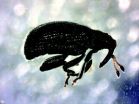(Press-News.org) Combined treatment with two drugs targeting different points in the same growth-factor pathway delayed the development of treatment resistance in patients with BRAF-positive metastatic malignant melanoma. The results of a phase I/II study of treatment with the kinase inhibitors dabrafenib and trametinib will be published in the New England Journal of Medicine and are being released online to coincide with a presentation at the European Society for Medical Oncology meeting in Vienna.
"We investigated this combination because of research we and others have conducted into the molecular underpinnings of resistance to BRAF inhibitor therapy," says Keith Flaherty, MD, of the Massachustts General Hospital (MGH) Cancer Center, lead author of the NEJM report and principal investigator of the study. "We found that adding the MEK inhibitor trametinib to BRAF inhibitor dabrafenib clearly delays the emergence of resistance. In fact, the combination was at least twice as effective as BRAF inhibition alone."
In around half of patients with metastatic melanoma, tumor growth is driven by mutations that keep the BRAF protein – part of the MAPK cell growth pathway – constantly activated. In recent years, drugs that inhibit BRAF activity have rapidly halted and reversed tumor growth in about 90 percent of treated patients, but most patients' response is temporary, with tumor growth resuming in six or seven months. Investigations into how this resistance emerges have suggested that the MAPK pathway gets turned back on through activation of MEK, another protein further down the pathway. Based on promising results of animal studies, the current investigation was designed to test whether inhibiting both the BRAF and MEK proteins could delay treatment resistance.
Sponsored by GlaxoSmithKline, the study by researchers at 14 sites in the U.S. and Australia tested two of the company's drugs – BRAF inhibitor dabrafenib and MEK inhibitor trametinib, both oral medications currently being evaluated by the FDA as single-agent therapeutics – in adult patients with BRAF-expressing malignant melanoma. Phase I testing confirmed that there were no drug-to-drug interactions between the two agents and evaluated the safety of different dose combinations. In the open-label phase II portion of the study, 162 patients were randomized into three groups that received different dose combinations: two daily 150 mg doses of dabrafenib plus one 2 mg trametinib dose, the same dabrafenib dose with a 1 mg dose of trametinib, or treatment with dabrafenib alone. Participants receiving dabrafenib alone were able to cross over to the full-dose combination treatment if their cancer resumed progression.
Treatment with both combination regimens led to a significant delay – about four months longer than with dabrafenib alone – in the emergence of resistance. After one year of treatment, 41 percent of those receiving full-dose combination treatment had no progression of their cancer, compared with only 9 percent of those receiving one drug. The occurrence of side effects such as skin rash and the development of squamous cell carcinoma, a less malignant skin cancer, was similar to that typically seen when only one of the two drugs is used, and some side effects were less frequent with the combination therapy.
Noting that the tested combination, now being tested in a larger Phase III study, delayed but did not prevent resistance in most participants, Flaherty says, "We need to continue focusing on resistance mechnisms occuring with this combination approach so we can better understand how to treat patients once resistance emerges or to develop other combination regimens to further prevent relapse. We also need to see if this approach could serve as an effective adjuvant therapy used following surgery to prevent recurrence. That might have the biggest impact on patients." Flaherty is an associate professor of Medicine at Harvard Medical School.
###
Jeffrey Infante, MD, of the Sarah Cannon Research Institute in Nashville is co-lead author of the NEJM paper and Jeffrey Weber, MD, PhD, of the Moffitt Cancer Center in Tampa is corresponding author. Additional participating institutions are the University of California at San Francisco, University of Colorado, Vanderbilt University, Angeles Clinic and Research Institute, University of Pennsylvania, Dana-Farber Cancer Institute, and M.D. Anderson Cancer Center in the U.S; and the Westmead Institute for Cancer Reearch and Ludwig Institute for Cancer Research in Australia.
Massachusetts General Hospital, founded in 1811, is the original and largest teaching hospital of Harvard Medical School. The MGH conducts the largest hospital-based research program in the United States, with an annual research budget of more than $750 million and major research centers in AIDS, cardiovascular research, cancer, computational and integrative biology, cutaneous biology, human genetics, medical imaging, neurodegenerative disorders, regenerative medicine, reproductive biology, systems biology, transplantation biology and photomedicine. In July 2012, MGH moved into the number one spot on the 2012-13 U.S. News & World Report list of "America's Best Hospitals."
Combination of targeted treatment drugs delays resistance in melanoma patients
2012-09-29
ELSE PRESS RELEASES FROM THIS DATE:
URI scientists: Marine plants can flee to avoid predators
2012-09-29
NARRAGANSETT, R.I. – September 28, 2012 – Scientists at the University of Rhode Island's Graduate School of Oceanography have made the first observation of a predator avoidance behavior by a species of phytoplankton, a microscopic marine plant. Susanne Menden-Deuer, associate professor of oceanography, and doctoral student Elizabeth Harvey made the unexpected observation while studying the interactions between phytoplankton and zooplankton.
Their discovery will be published in the September 28 issue of the journal PLOS ONE.
"It has been well observed that phytoplankton ...
An old insect pest reemerges in organic orchards
2012-09-29
The apple flea weevil, a sporadic insect pest in the early 1900s, has reemerged as a severe pest in organic apple orchards in Michigan, where outbreak population levels have been observed since 2008, and damage has resulted in up to 90% losses for apple growers.
According to the authors of "The Reemergence of an Old Pest, Orchestes pallicornis (Coleoptera: Curculionidae)," an open-access article appearing in the lastest issue of the Journal of Integrated Pest Management, the weevil can be managed by broad-spectrum insecticides used in conventional agriculture, but there ...
Researchers find multiple similarities between cancer cells and induced pluripotent stem cells
2012-09-29
(SACRAMENTO, Calif.) — UC Davis investigators have found new evidence that a promising type of stem cell now being considered for a variety of disease therapies is very similar to the type of cells that give rise to cancer. The findings suggest that although the cells -- known as induced pluripotent stem cells (iPSCs) -- show substantial promise as a source of replacement cells and tissues to treat injuries, disease and chronic conditions, scientists and physicians must move cautiously with any clinical use because iPSCs could also cause malignant cancer.
The article, ...
New method monitors semiconductor etching as it happens -- with light
2012-09-29
CHAMPAIGN, Ill. — University of Illinois researchers have a new low-cost method to carve delicate features onto semiconductor wafers using light – and watch as it happens.
"You can use light to image the topography and you can use light to sculpture the topography," said electrical and computer engineering professor Gabriel Popescu. "It could change the future of semiconductor etching."
Chip makers and semiconductor researchers need to very precisely control the dimensions of their devices. The dimensions of the components affect performance, speed, error rate and time ...
Tadpole shrimp a new pest of rice in the midsouthern United States
2012-09-29
Tadpole shrimp are pests of rice production systems in California and have recently been found impacting Missouri and Arkansas rice fields. The shrimp feed on rice seedlings and uproot them during foraging, and their foraging behavior causes water to become muddy, which reduces light penetration to submerged seedlings and delays the development of the rice plant.
In "Review of a New Pest of Rice, Tadpole Shrimp (Notostraca: Triopsidae), in the Midsouthern United States and a Winter Scouting Method of Rice Fields for Preplanting Detection," a new open-access article appearing ...
Bored? Researchers shed light on why
2012-09-29
This gives new meaning to the complaint "I'm bored" — literally.
Canadian researchers — including a professor from the University of Guelph — have come up with a new, precise definition of boredom based on the mental processes that underlie the condition.
Although many people may see boredom as trivial and temporary, it actually is linked to a range of psychological, social and health problems, says Guelph psychology professor Mark Fenske. He's among authors of a new study in Perspectives on Psychological Science, published by the Association for Psychological Science.
Boredom ...
Time bomb: Military ordnance in Gulf poses threat to shipping, says Texas A&M proffesor
2012-09-29
Millions of pounds of unexploded bombs and other military ordnance that were dumped decades ago in the Gulf of Mexico, as well as off the coasts of both the Atlantic and Pacific oceans, could now pose serious threats to shipping lanes and the 4,000 oil and gas rigs in the Gulf, warns two Texas A&M University oceanographers.
William Bryant and Neil Slowey, professors of oceanography who have more than 90 years of combined research experience in all of the Earth's oceans, along with fellow researcher Mike Kemp of Washington, D.C., say millions of pounds of bombs are scattered ...
IUCN adopts new 'Green List' to show species on the path to conservation success
2012-09-29
The IUCN World Conservation Congress has adopted a motion sponsored by the Wildlife Conservation Society and partners to create a Green List to assess conservation success. The Green List for Species would include species identified as 'fully conserved,' which are those that exist in ecologically significant numbers, interacting fully with other species in their ecosystems.
The motion was adopted at the World Conservation Congress, which was held this month in Jeju, Republic of Korea.
The aim of the Green List is to highlight species that are thriving parts of a healthy ...
NASA sees super Typhoon Jelawat Affecting Japan
2012-09-29
Super Typhoon Jelawat is a large and powerful storm that has been bringing very rough seas to areas in the western North Pacific. NASA's Terra satellite passed over the monster storm and captured a visible image as it nears the big island of Japan.
NASA's Terra satellite passed over Super Typhoon Jelawat on Sept. 28 at 0238UTC (10:38 p.m. EDT, Sept. 27) and the Moderate Resolution Imaging Spectroradiometer captured an infrared image as the storm approaches Okinawa, Japan.
Jelawat's center passed by Ishigaki-jima by 1500 UTC (11 a.m. EDT) on Sept. 28 and was approaching ...
NASA sees sun unleash a wide, but benign, CME
2012-09-29
The sun erupted with a wide, Earth-directed coronal mass ejection (CME) on Sept. 27, 2012 at 10:25 p.m. EDT. CMEs are a phenomenon that can send billions of tons of solar particles into space that can reach Earth one to three days later, affecting electronic systems in satellites and on the ground. Experimental NASA research models estimate that the CME is traveling at around 700 miles per second and will reach Earth on Sept. 29.
CMEs of these speeds are usually benign. In the past, similar CMEs have caused auroras near the poles but have not caused disruption to electrical ...




